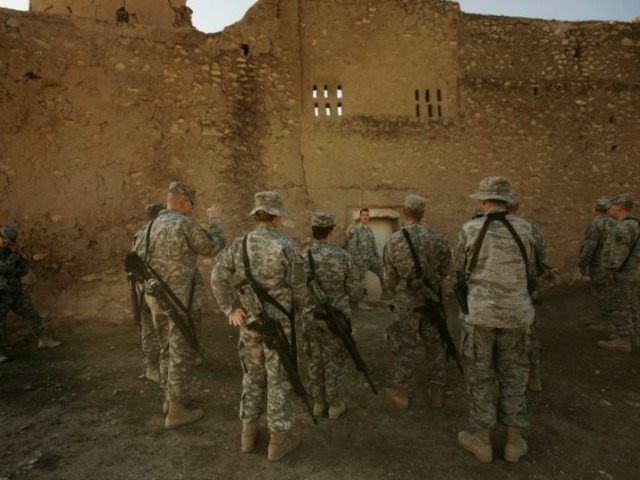The Pentagon has weighed in on the Islamic State’s demolition of a 1400-year-old Christian monastery in Iraq, with U.S. Col. Steve Warren calling the move “a battle of savagery against decency.”
Speaking from Baghdad, Warren said that the “enemy has proven time and again its ruthlessness, its barbarity, its willingness to destroy everything from human life to civilian supporting infrastructure, to, you know, cultural artifacts, with absolute disregard for history, for humanity, or for anything that approaches decency.”
Reports Wednesday revealed that militants from the Islamic State had completely destroyed the 1400-year-old Monastery of St. Elijah in Mosul, the oldest Christian monastery in Iraq.
The monastery, also known by the name of Dair March Elijah, was founded in 590 AD on a hill overlooking Mosul, and bore the carved Greek letters chi and rho near the entrance, representing the first two letters of Christ’s name.
New satellite images confirmed that the ancient stone walls had been reduced to dust, likely with the use of machinery and perhaps explosives.
“Bulldozers, heavy equipment, sledgehammers, possibly explosives turned those stone walls into this field of gray-white dust. They destroyed it completely,” said Stephen Wood, CEO of Allsource Analysis, on examining the images.
“There’s nothing to rebuild,” he said.
On seeing photos of the destruction, Father Paul Thabit Habib, a 39-year-old priest from Mosul who now lives in exile in Irbil, had trouble containing his emotion.
“I can’t describe my sadness,” Habib said. “Our Christian history in Mosul is being barbarically leveled. We see it as an attempt to expel us from Iraq, eliminating and finishing our existence in this land.”
The Islamic State has systematically eradicated religious and historic monuments that provide ties to the pre-Islamic culture of the region. ISIL has destroyed numerous churches, mosques, shrines and mausoleums in Iraq, as well as artifacts in the ancient cities of Nineveh, Hatra and Nimrud, and notably in the Syrian city of Palmyra.
The result has been devastating for the region, and many of its effects will be permanent. France Desmarais, director of programs and partnerships at the International Council of Museums, called the pillaging and demolition “the largest-scale mass destruction of cultural heritage since the Second World War” while Boston University archaeologist Michael Danti referred to it as “the gravest cultural emergency I’ve seen.”
Vatican spokesman Father Federico Lombardi said Wednesday that since the monastery dates back to the time Christians were united, before the “Great Schism” between Orthodox and Catholics, the place was particularly important for Christian unity.
“Unfortunately, there is this systemic destruction of precious sites, not only cultural, but also religious and spiritual. It’s very sad and dramatic,” Lombardi said.
Follow Thomas D. Williams on Twitter @tdwilliamsrome

COMMENTS
Please let us know if you're having issues with commenting.